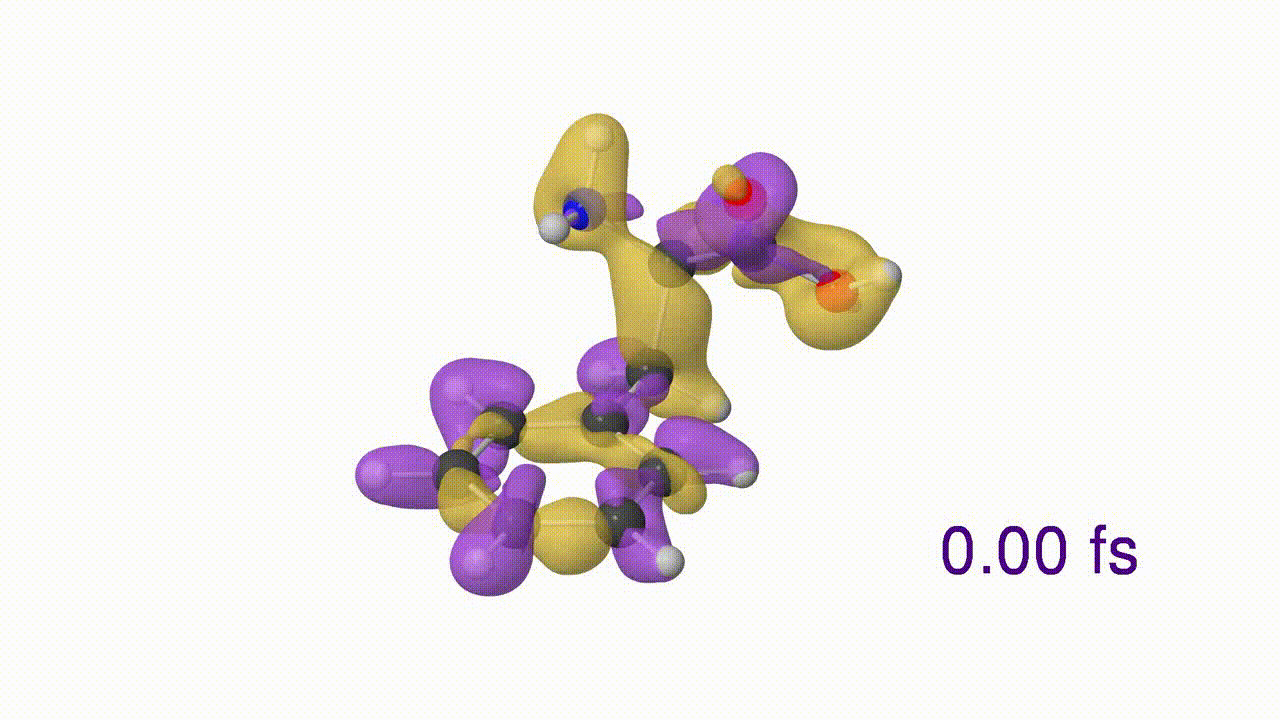The timescale relevant for a process at the atomic or molecular level is ultimately set by the motion of electrons, which occurs on ultrashort timescales, ranging from a few femtoseconds down to tens of attoseconds [1]. Ultrafast electron dynamics induced by light plays a crucial role in the early stages of photosynthesis, in radiation damage of biologically relevant molecules, and in general in any chemical or biological process in which electron transfer occurs. How the electron dynamics initiated by attosecond excitation affect nuclear motion is another key aspect, whose detailed modelling and understanding is extremely challenging. Indeed, after just a few femtoseconds from the interaction with the attosecond pulse, the molecular dynamics is notably affected by the coupling between electronic and nuclear degrees of freedom, thus determining the breakdown of the Born-Oppenheimer approximation. In this case, non-adiabatic processes start playing a crucial role. This is the typical situation occurring when, for example, the chemical transformation evolves through conical intersections (CIs), i.e. low-energy real crossings between different electronic states, which are rather ubiquitous in large molecules and essential to understand non-adiabatic mechanisms at the heart of important photoinduced processes in bio-molecules, such a photosynthesis, vision and self-protecting property of DNA. Non-adiabatic processes can enter into play on ultrashort timescales, even sub-femtosecond, for example when proton motion is involved.
The ability to initiate and measure electron dynamics in complex molecular structures [2,3] represents a crucial step forward in pursuing the goal of manipulating chemical reactions by exclusively acting on the particles that are ultimately responsible for chemical bonding: the electrons. The experimental investigation of ultrafast processes on the attosecond time scale may open new perspectives in the understanding of the physics governing electron transport of biological signals. Also, the ability to visualize charge dynamics occurring in molecular sub-units can be of primary importance to unravel the role of the electrons in the subsequent structural changes that a molecule undergoes. All this may open new perspectives for the development of new technologies, for example in molecular electronics, where electron processes on an ultrafast temporal scale are essential to trigger and control the electron current on the scale of the molecule [4].
The aim of our research activity is the generation and application of attosecond pulses to unravel peculiar electron-dynamics in molecules of optoelectronics and biological interest.
Particularly intriguing is the investigation of photo-induced electron transfer and charge transfer processes, which are the cornerstone to understand high-efficient solar energy conversion, and it is at the heart of the transmission of biological signals in proteins and DNA.
The comprehension of these phenomena will pave the way to the control and engineering of the ultrafast light-induced molecular response.
The main research activities in this research field are the following:
• Photo-Induced electron dynamics in optoelectronic molecules. Study of light-induced quantum charge transfer processes, form tunneling to hopping, in molecules that are at the heart of emerging technologies, like those based on photovoltaic devices, molecular wires, artificial photosynthesis. The goal is to study with attosecond techniques the behavior of the electrons inside complex molecules at a yet unexplored timescale.
• Ultrafast processes in bio-relevant molecules. Disclose the electron dynamics in biologically-relevant molecules, such as amino acids or DNA bases. The main research focus is the understanding of charge migration/transfer processes, which play a fundamental role in many relevant biological mechanisms, e.g. the transmission of bio-signals in proteins and DNA, or the photosynthesis.

Charge migration in phenylalanine (Credits: Fernando Martín)
• Attochemistry. Investigation of the interaction of light with polyatomic molecular systems by triggering ultrafast electronic motions. The scope of this research is to establish the control of the chemical properties of molecules through a time-resolved manipulation of the electronic degrees of freedom.
Bibliography:
1. M. Nisoli, P. Decleva, F. Calegari, A. Palacios, F. Martín, “Attosecond electron dynamics in molecules,” Chem. Reviews 117, 10760-10825 (2017).
2. F. Calegari, D. Ayuso, A. Trabattoni, L. Belshaw, S. De Camillis, S. Anumula, F. Frassetto, L. Poletto, A. Palacios, P. Decleva, J. Greenwood, F. Martín, M. Nisoli, “Ultrafast Electron Dynamics in Phenylalanine Initiated by Attosecond Pulses,” Science 346, 336-339 (2014).
3. F. Calegari, A. Trabattoni, A. Palacios, D. Ayuso, M. Castrovilli, J. Greenwood, P. Decleva, F. Martin, M. Nisoli, “Charge migration induced by attosecond pulses in bio-relevant molecules,” J. Phys. B: Atom. Mol. Opt. Phys. 49, 142001-1-25 (2016).
4. M. Nisoli, “The Birth of Attochemistry,” Optics & Photonics News 30, n. 07/08, 32-39 (2019).
Collaborations
We collaborate with a number of international research groups, active in the field of attosecond science and technology:
- Fernando Martín (Universidad Autónoma de Madrid, Spain)
- Anne L’Huillier (Lund University, Sweden)
- John Travers (Heriot-Watt University, United Kingdom)
- Nazario Martín (Universidad Complutense de Madrid, Spain)
- Lorenzo Avaldi (ISM-CNR, Rome, Italy)
- Luca Poletto (IFN-CNR, Padova, Italy)
- Francesca Calegari (CFEL, DESY; Hamburg, Germany)
- Jason Greenwood (Queen’s University, Belfast, UK)
- Piero Decleva (Università di Trieste, Trieste, Italy)
